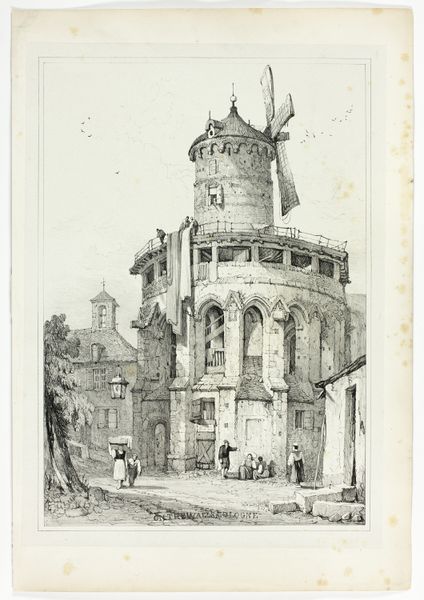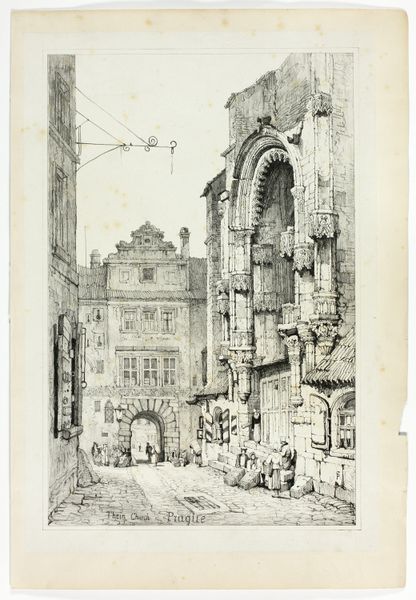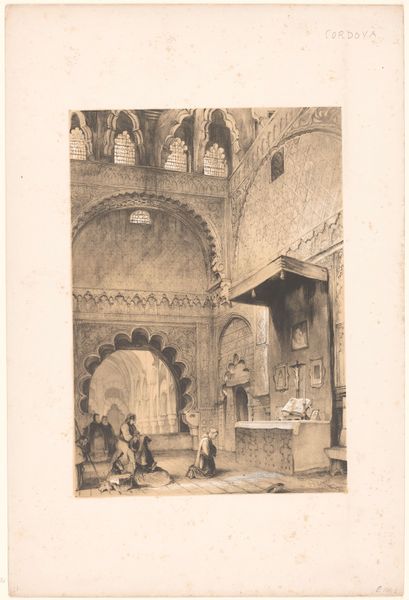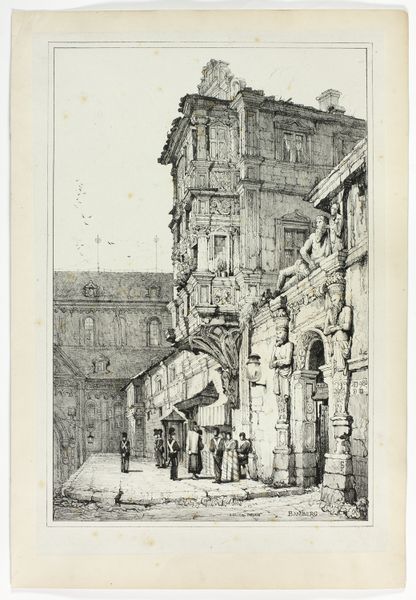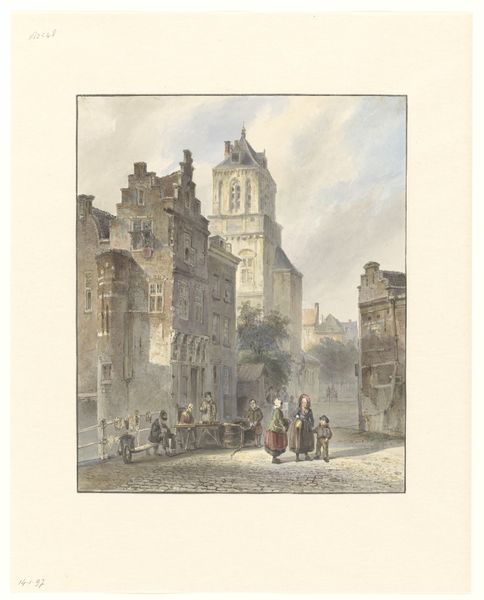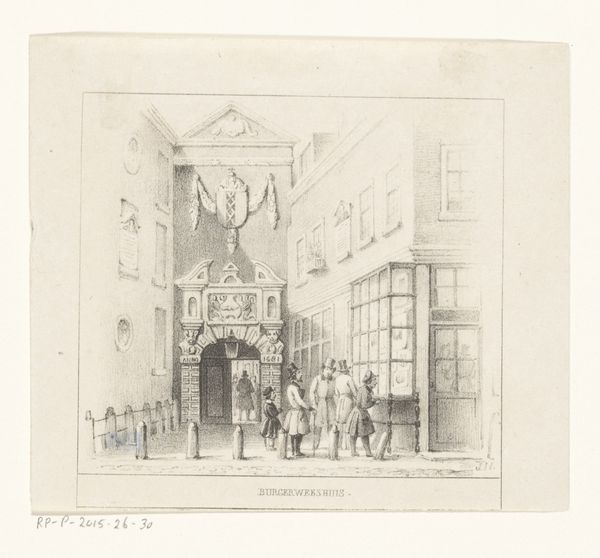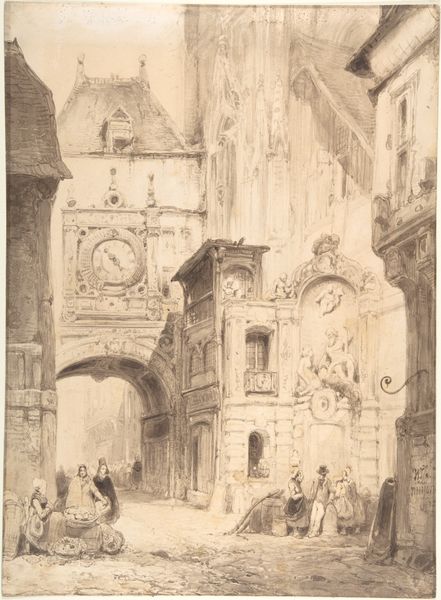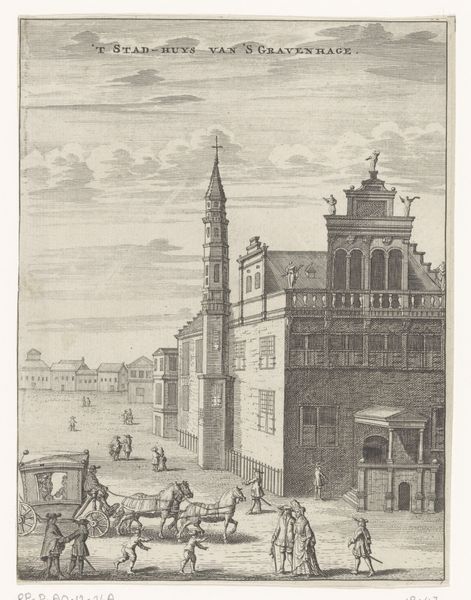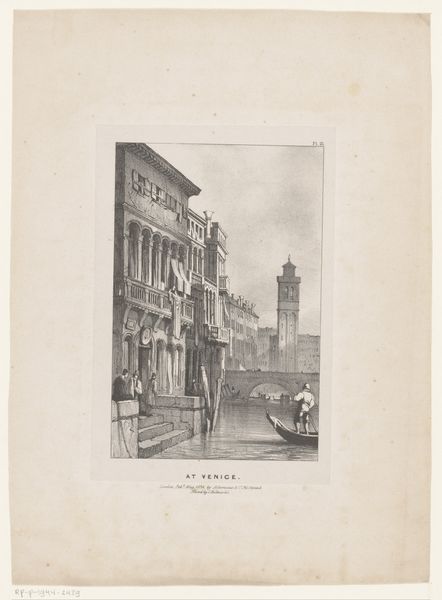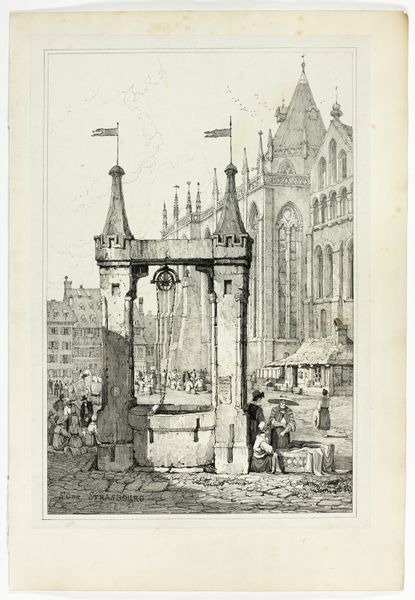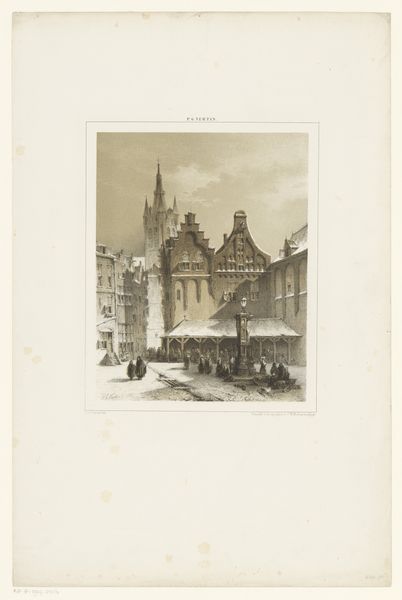
drawing, lithograph, print, paper
#
drawing
#
lithograph
# print
#
paper
#
romanticism
#
cityscape
Dimensions: 290 × 425 mm (image); 310 × 445 mm (primary support); 345 × 500 mm (secondary support)
Copyright: Public Domain
Curator: Look at this lithograph by Samuel Prout from 1833, simply titled "Cologne," currently housed at the Art Institute of Chicago. Editor: Immediately, I’m struck by the intense texture— the way the ink seems to vibrate on the page, all those tiny lines. There’s a stillness despite the implied bustling market. It's almost melancholic, isn't it? Curator: It’s interesting you say that. For me, the romance comes from Prout's obsession with the worn surfaces. He elevates the daily happenings of this cityscape through careful attention to materials, the labor, and even decay of urban architecture. I'd be interested to know where exactly this stone was quarried and to see it. Editor: Decay... or perhaps rebirth. See the little weeds growing from that fantastic oriel window? Like stubborn hopes sprouting from the old stones. This window becomes like the eye of a grand building, surveying the mundane scenes down below and feeling every raindrop, every ray of sun. Curator: Certainly, the romantic in Prout highlights this drama. I imagine the making of such prints wasn’t always so picturesque: grinding stones, acid etching. Then those workers haggling over produce under that awning over there. I wonder about their living situations; Were there social shifts or class struggles during this period of early Romanticism? Editor: Right! Maybe some revolutionary fervor barely contained. And thinking about the laborers themselves— their lives now faded into the background of someone else’s architectural sketch. I almost missed it because I was mesmerized by the way Prout captures this specific historical feeling and how the human element enhances the scale. Curator: Absolutely. What seems at first like a straightforward architectural study has all of this rich underlayment for sure. It shows this complex interplay between material processes, personal experience, and a broader social landscape. Editor: Exactly. Seeing the evidence of past processes makes a work feel infinitely more alive, wouldn't you say?
Comments
No comments
Be the first to comment and join the conversation on the ultimate creative platform.

